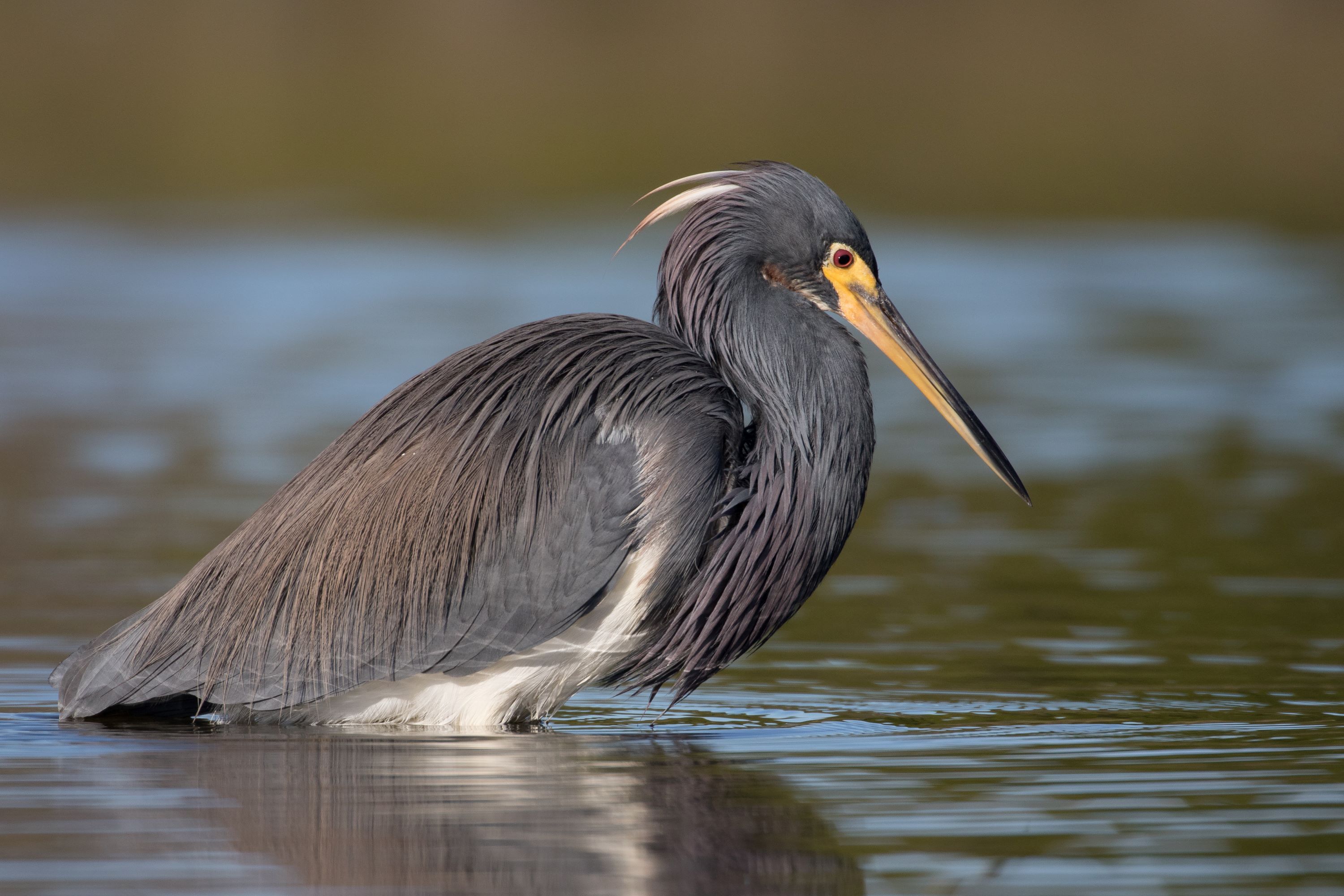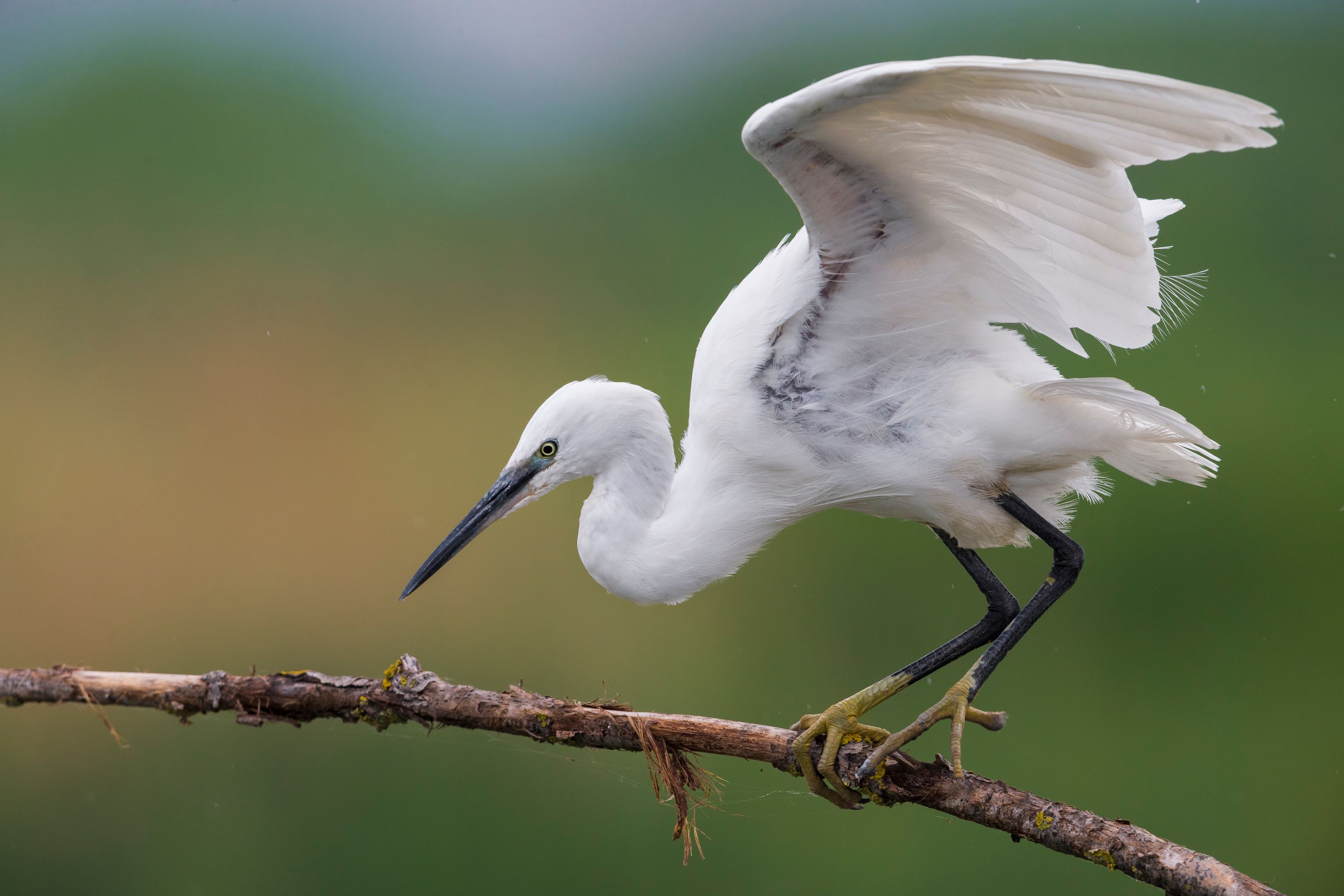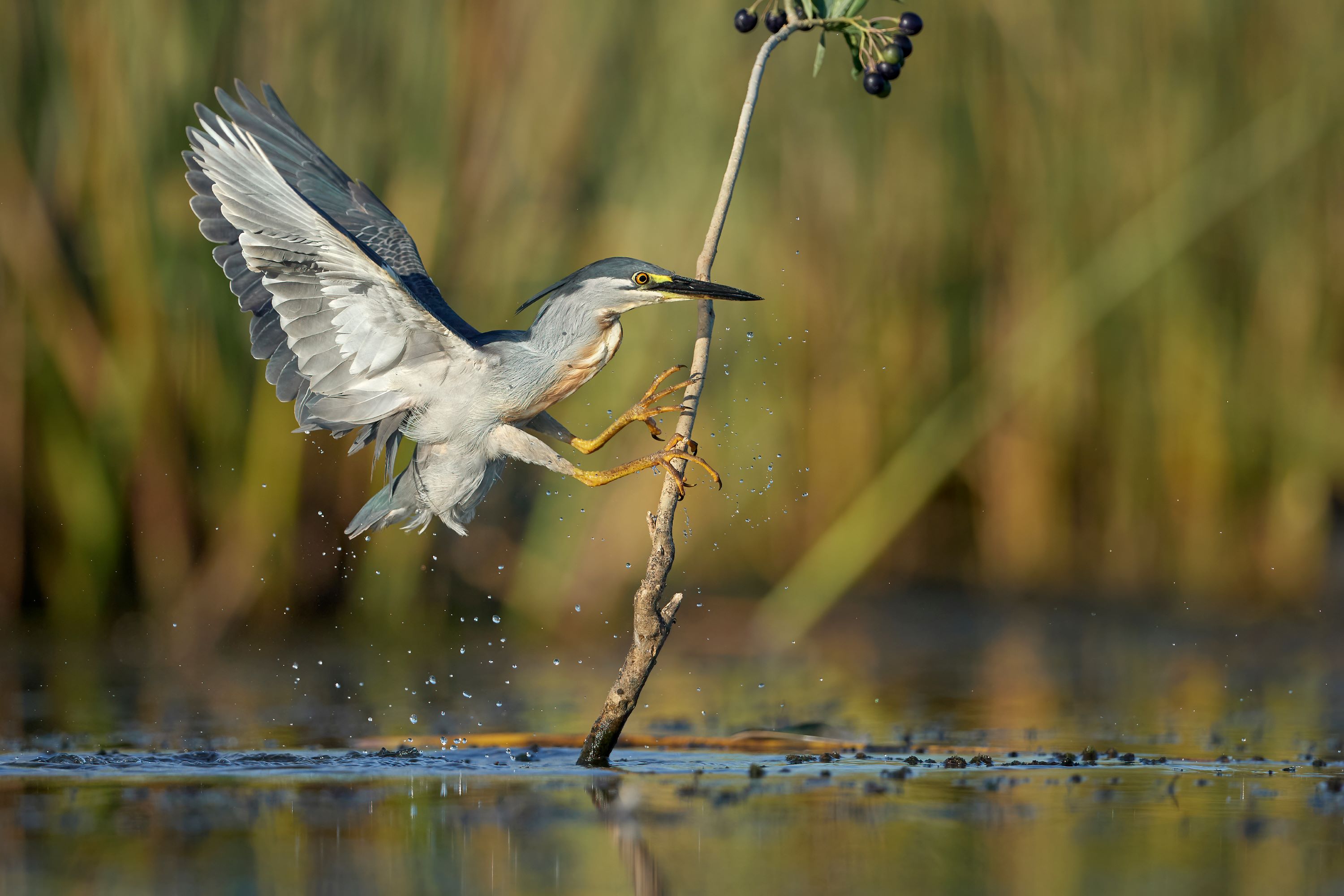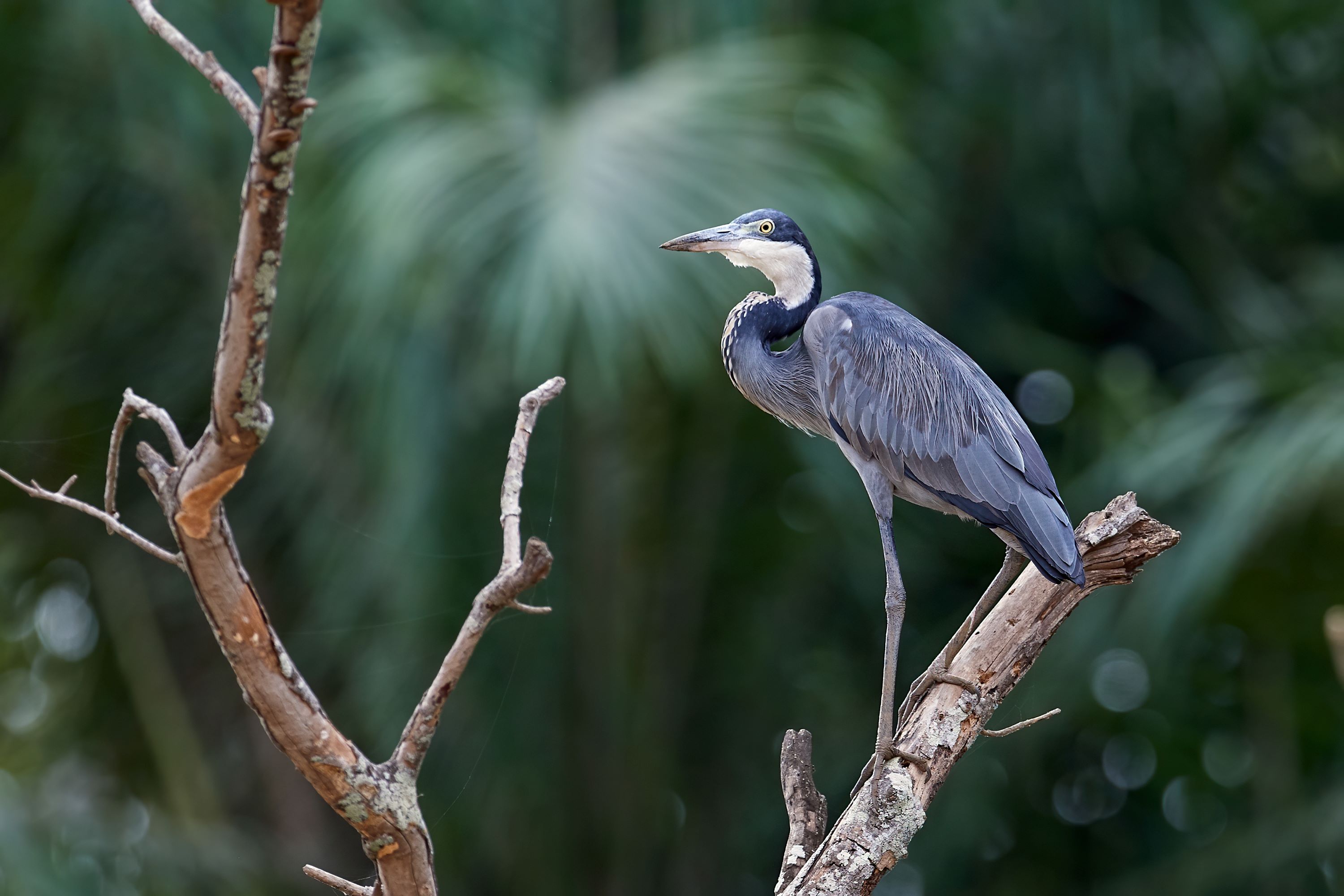Ardeidae: The Heron Family and Their Global Presence
Introduction to the Family Ardeidae
The family Ardeidae, commonly known as the heron family, includes some of the most recognizable and widespread wading birds found in diverse habitats across the world. This family comprises herons, egrets, and bitterns, each known for their long legs, necks, and distinctive hunting techniques.
Physical Characteristics of the Ardeidae Family
Diverse Size and Appearance
The family Ardeidae, encompassing herons, egrets, and bitterns, exhibits a remarkable diversity in size and appearance. This variation is evident in species such as the towering Great Blue Heron, which can stand at an impressive height of up to 1.4 meters, making it one of the largest herons. On the other end of the spectrum are the more diminutive and elusive bitterns, like the American Bittern, which measures a more modest 60 to 70 centimeters in height. This size range within the family allows for adaptation to various ecological niches and hunting strategies, from wading in deep waters to maneuvering through dense marsh vegetation.
Structural Adaptations
Despite their size differences, members of the Ardeidae family share several key physical traits that are emblematic of their adaptation to aquatic environments. One of the most prominent features is their long, pointed bills, which exhibit remarkable variation in size and shape, tailored to the specific dietary preferences of each species. For example, the slender, dagger-like bill of the Grey Heron is ideal for swiftly capturing fish, while the broader, shorter bill of the Boat-billed Heron is adept at scooping up crustaceans.
Legs and Feet Adaptations
Another shared characteristic is their long legs, suited for wading in various water depths. Species like the Black-crowned Night Heron have slightly shorter legs, facilitating hunting in shallower waters or dense cover, whereas the long-legged Reddish Egret is adept at foraging in deeper waters. Their feet are specially adapted for this lifestyle too, with long toes that help distribute their weight and allow them to tread softly over mud and water plants.
Plumage and Coloration
The plumage of Ardeidae members is equally varied and serves multiple purposes, from camouflage to social signaling. The stark white feathers of the Great Egret, which can become brilliantly adorned with long, flowing nuptial plumes during the breeding season, contrast sharply with the more subdued, cryptic coloring of bitterns, which aids in their concealment among reeds and marshes. The vibrant plumes of egrets were once so coveted for fashion purposes that they brought some species to the brink of extinction until conservation efforts curbed the practice.
Posture and Stance
Ardeidae birds are also characterized by their poised and elegant stance. Typically, they stand erect with a straight neck, which can be retracted into an S-shape when flying or resting. This posture not only aids in their stealthy hunting approach but also plays a role in thermoregulation and aids in quick strikes when catching prey.
Adaptation to Aquatic Life
These physical attributes are not merely for show but are crucial adaptations for life in and around water bodies. The combination of their physical characteristics makes the Ardeidae family supremely adapted to their roles as aquatic or semi-aquatic predators, able to exploit a variety of ecological niches within wetland environments.
In summary, the Ardeidae family showcases a stunning array of physical adaptations that not only highlight their evolutionary success but also underscore their importance in the balance of aquatic ecosystems. From their varied sizes and plumage to their specialized bills and legs, these birds are a testament to the diversity and adaptability of life in our world's wetlands.
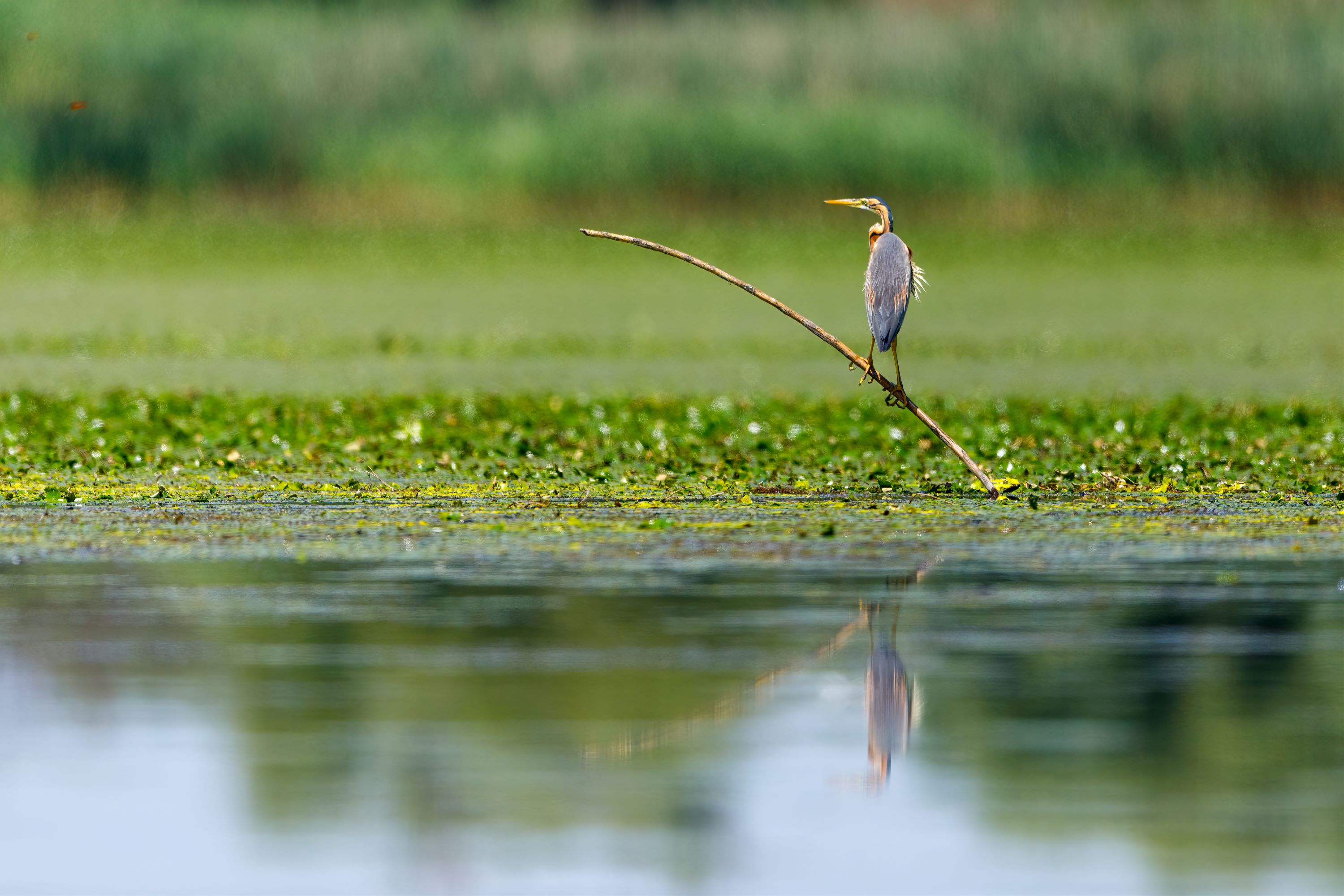
Habitat and Distribution of the Ardeidae Family
Global Presence and Ecological Adaptability
The Ardeidae family, encompassing herons, egrets, and bitterns, boasts a remarkable global distribution, making its presence known on every continent except the icy expanse of Antarctica. This widespread occurrence underscores the family's incredible adaptability to a variety of ecological settings and climates, ranging from the tropical wetlands of the Amazon to the temperate marshes of North America and Europe.
Diversity in Wetland Habitats
Ardeidae species are most commonly associated with wetland ecosystems, which serve as critical habitats for their survival and prosperity. These environments vary greatly in both geographical and ecological characteristics. In marshes, members of the Ardeidae family thrive amidst tall grasses and reeds, which provide both ample food sources and protection. Rivers, with their flowing waters and abundant fish, offer ideal hunting grounds for these adept fishers.
Lakes and Ponds as Crucial Habitats
Lakes and ponds, with their still waters and rich biodiversity, are also favored by many heron species. Here, the birds can be seen patiently stalking their prey in the shallows or perched motionlessly, waiting to strike. The vegetation around these freshwater bodies also provides safe nesting sites.
Adaptation to Coastal Regions
Furthermore, many Ardeidae species have adapted to life in coastal regions, where they navigate the interface of land and sea. In these saline environments, they exploit tidal flats and mangroves, which are rich in crustaceans and small fish. The ability to switch between freshwater and marine environments is a testament to the physiological and behavioral versatility of these birds.
Varied Climatic Tolerances
Ardeidae species exhibit a remarkable tolerance for various climatic conditions. While some species, such as the Great Blue Heron, can endure and adapt to seasonal changes in temperate zones, others, like the Snowy Egret, prefer the consistent warmth of tropical and subtropical climates.
Migratory Patterns
The migratory patterns of Ardeidae species also reflect their adaptability. Many species undertake long migratory journeys to exploit seasonal food availability, breeding opportunities, and favorable climatic conditions. These migrations are a testament to their resilience and ability to navigate vast distances across diverse landscapes.
Importance of Wetlands for Biodiversity
The presence of Ardeidae members in wetlands around the world highlights the ecological significance of these habitats. Wetlands not only provide essential resources for these birds but also support a rich array of other wildlife, underscoring the importance of conserving these ecosystems for global biodiversity.
Urban and Suburban Adaptations
In recent years, some Ardeidae species have shown remarkable adaptability to urban and suburban environments. Parks with ponds, urban wetlands, and city estuaries increasingly play host to these birds, indicating their ability to coexist in human-altered landscapes.
In conclusion, the Ardeidae family's widespread distribution and habitat diversity are key indicators of their ecological importance and adaptability. From remote wetlands to bustling city waterways, these birds have become integral components of ecosystems worldwide, contributing to the ecological balance and offering opportunities for human interaction with nature.
Behavioral Patterns and Lifestyle of the Ardeidae Family
The Ardeidae family, encompassing a diverse range of herons, egrets, and bitterns, exhibits a fascinating array of behaviors and lifestyles that are intricately adapted to their aquatic habitats. One of the most defining characteristics of these birds is their hunting strategy. Typically, they are seen as solitary hunters, embodying patience and precision. In the stillness of shallow waters, they stand motionless, often for extended periods, or wade slowly with calculated steps. This methodical approach allows them to stealthily close in on their prey, primarily fish, which they catch with a swift and decisive thrust of their long, sharp bill. This technique showcases an extraordinary blend of stillness and speed, making them efficient predators in their watery domains.
However, the solitary nature of their hunting belies the more social aspects of their behavior, particularly evident during the breeding season. Many species within the Ardeidae family exhibit communal tendencies when it comes to nesting and rearing their young. This is most prominently observed in their formation of breeding colonies, known as heronries, which may range from a few pairs to hundreds or even thousands of individuals. These colonies are often a hub of activity, marked by a chorus of calls and a flurry of movement as birds engage in elaborate courtship rituals, build nests, and care for their offspring. The communal nesting not only offers safety in numbers from predators but also provides a platform for social interaction among the birds. During this period, the otherwise silent wetlands come alive with their diverse vocalizations, ranging from deep croaks to high-pitched calls, serving as a means of communication between mates and a way to ward off rivals or threats. Outside the breeding season, while some species revert to their solitary ways, others continue to exhibit social behavior, often seen roosting and foraging in groups, further emphasizing the complexity and diversity of their lifestyle and behavior.
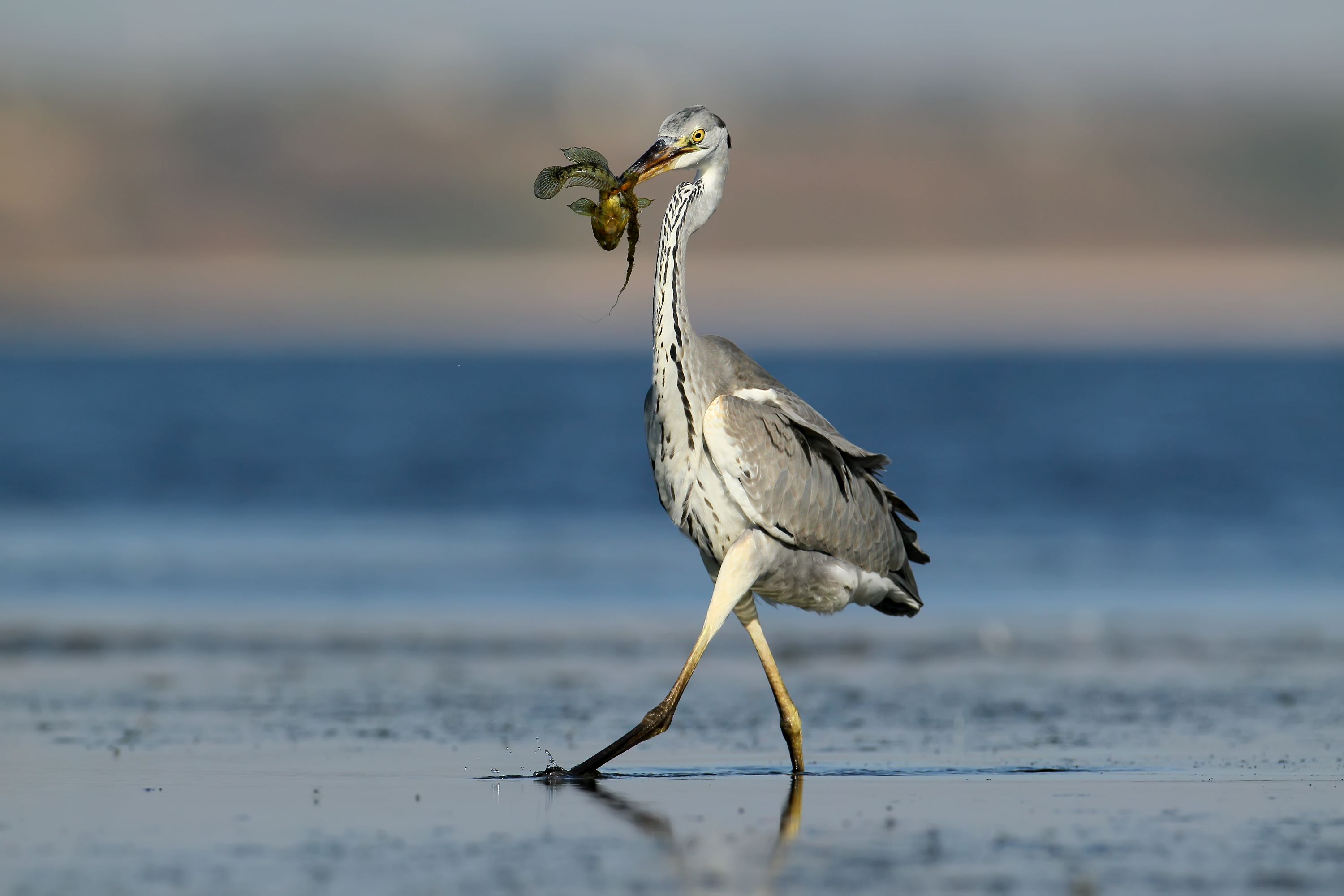
Feeding Habits
Members of the Ardeidae family, which includes herons, egrets, and bitterns, demonstrate a remarkable prowess in their feeding habits, primarily adapted to aquatic environments. While fish constitute the bulk of their diet, providing essential nutrients and energy, these adept hunters also display a diverse palate. Their diet extends to amphibians like frogs and salamanders, which they often find in or near water bodies. Crustaceans such as crabs and shrimp are also a significant part of their diet, especially for species inhabiting coastal and estuarine environments. Additionally, these birds are known to consume a variety of insects – from water-bound species like dragonflies and water beetles to terrestrial insects that venture close to the water's edge. Small mammals like voles and rodents, as well as smaller bird species, can occasionally become prey for larger herons, highlighting their adaptability and opportunistic feeding behavior.
The hunting technique of the Ardeidae family is a marvel of precision and speed, honed through evolution to suit their aquatic hunting grounds. Typically, these birds employ a strategy of stealth and patience, often standing motionless or slowly stalking in shallow waters. Their long legs allow them to wade without disturbing the water significantly, thus maintaining the element of surprise. Once their prey is within striking distance, they utilize their long, pointed bill in a lightning-fast jab to snatch or spear the unsuspecting prey. This action is incredibly swift and accurate, testament to their skill as predators. The sharpness and shape of their bill are crucial in this regard, allowing for a quick impale or firm grasp of the prey. For larger or more elusive prey, some herons and egrets may use a more dynamic approach, agitating the water with their feet or wings to flush out hidden prey.
The feeding habits of the Ardeidae family are a testament to their adaptability and predatory skills. Their diverse diet and specialized hunting techniques not only ensure their survival across various habitats but also underline their importance as predators in aquatic ecosystems. The Ardeidae’s role in controlling fish and insect populations highlights their integral place in maintaining the ecological balance of their habitats.
Breeding and Nesting Habits
Most herons and egrets in this family breed in colonies, known as heronries, which may contain hundreds of individual nests. These are typically located in trees or reeds near water. Bitterns, on the other hand, are more solitary and nest in dense vegetation.
Egg Laying and Incubation
The size and color of eggs vary among species, but generally, females lay 2 to 6 eggs. Both parents share responsibilities for incubation, which lasts about 3 to 4 weeks.
Chick Rearing and Parental Care
Ardeidae chicks are usually altricial and require significant parental care. They are fed by regurgitation and grow rapidly, fledging in about 6 to 8 weeks.
Vocalizations and Communication
Members of the Ardeidae family use a range of vocalizations, especially during the breeding season. These sounds include croaks, barks, and chattering, which vary widely among species.
Conservation Status
The conservation status of the Ardeidae family, encompassing herons, egrets, and bitterns, is a complex and varied tapestry, reflecting the diverse challenges these species face across their global habitats. On one hand, numerous species within this family, such as the common Great Blue Heron and the widespread Snowy Egret, boast robust and stable populations, thriving in a variety of environments and demonstrating remarkable adaptability. However, this general abundance masks the precarious situation of several other species within the Ardeidae family. For instance, the critically endangered White-bellied Heron faces imminent threats due to rapid habitat destruction and fragmentation, primarily driven by human encroachment, deforestation, and changing land-use patterns. Similarly, the Agami Heron and the Black Heron are experiencing significant population declines, primarily attributed to wetland degradation, pollution of waterways, and the resultant loss of food resources. These threats are compounded by the broader impacts of climate change, which are altering the ecological dynamics of wetlands and coastal areas, crucial habitats for these species. The varied conservation status within the Ardeidae family thus serves as a stark reminder of the delicate balance between these birds and their environments, highlighting the urgent need for concerted conservation efforts aimed at habitat preservation, pollution control, and sustainable human-wildlife coexistence.

Ardeidae in Utah
In Utah, the presence of the Ardeidae family is marked by the striking figures of several heron species, notably the majestic Great Blue Heron and the elegant Snowy Egret. These birds have adapted remarkably to the diverse aquatic landscapes of Utah, making the state’s wetlands, rivers, and lakes their preferred habitats. The Great Blue Heron, with its impressive stature and wide wingspan, can often be seen gracefully navigating along the calm waters of the Jordan River or standing sentinel in the marshy reserves of the Bear River Migratory Bird Refuge. Meanwhile, the Snowy Egret, with its pure white plumage and distinctive black legs and yellow feet, brings a contrasting elegance to these habitats. These birds play a crucial role in Utah’s ecosystems, serving as both predators and indicators of environmental health. They contribute to the control of fish and insect populations, thus maintaining the delicate balance within these aquatic systems. Their presence in Utah’s wetlands is also a boon for bird watchers and nature enthusiasts, who are often captivated by the serene beauty and poise of these avian inhabitants.
The Genus Ardea:
- Great Blue Heron - Ardea alba
- Great Egret - Ardea herodias
The Genus Botaurua:
- American Bittern - Botaurus lentiginosus
The Genus Bubulcus:
- Cattle Egret - Bubulcus ibis
The Genus Butorides:
- Green Heron - Butorides virescens (Occasional)
The Genus Egretta:
- Little Blue Heron - Egretta caerulea (Accidental)
- Reddish Egret - Egretta rufescens (Accidental)
- Snowy Egret - Egretta thula
- Tricolored Heron - Egretta tricolor (Accidental)
The Genus Ixobrychus:
- Least Bittern - Ixobrychus exilis (Occasional)
The Genus Nyctanassa:
- Yellow-crowned Night Heron - Nyctanassa violacea (Accidental)
The Genus Nycticorax:
- Black-crowned Night Heron - Nycticorax nycticorax
Similar Species and Taxonomy
The Ardeidae family, an integral part of the order Pelecaniformes, is often likened to other large wading birds due to their similar ecological roles and habitats. While they share a superficial resemblance to storks (family Ciconiidae), cranes (family Gruidae), and ibises (family Threskiornithidae) in terms of their long legs and necks adapted for wading in aquatic environments, significant differences exist in their anatomy, behavior, and ecological niches. Herons, egrets, and bitterns of the Ardeidae family are distinct in their predominantly solitary hunting style, often seen standing motionless or stalking with stealth in shallow waters for fish and small aquatic animals, a technique that starkly contrasts with the more active foraging behavior of storks and ibises. Additionally, the nesting habits of Ardeidae species set them apart: many herons and egrets nest in large, sometimes noisy, colonies known as heronries, which are typically located in trees or reeds near water bodies. This colonial nesting is a trait not commonly observed in the more solitary and territorial storks and cranes. Furthermore, the anatomical structure of Ardeidae, particularly their specialized neck vertebrae allowing for rapid strikes, is a refined adaptation for their specific feeding habits. These nuanced differences underscore the unique evolutionary path of the Ardeidae family within the avian world and highlight the diversity of life strategies even among seemingly similar bird groups.
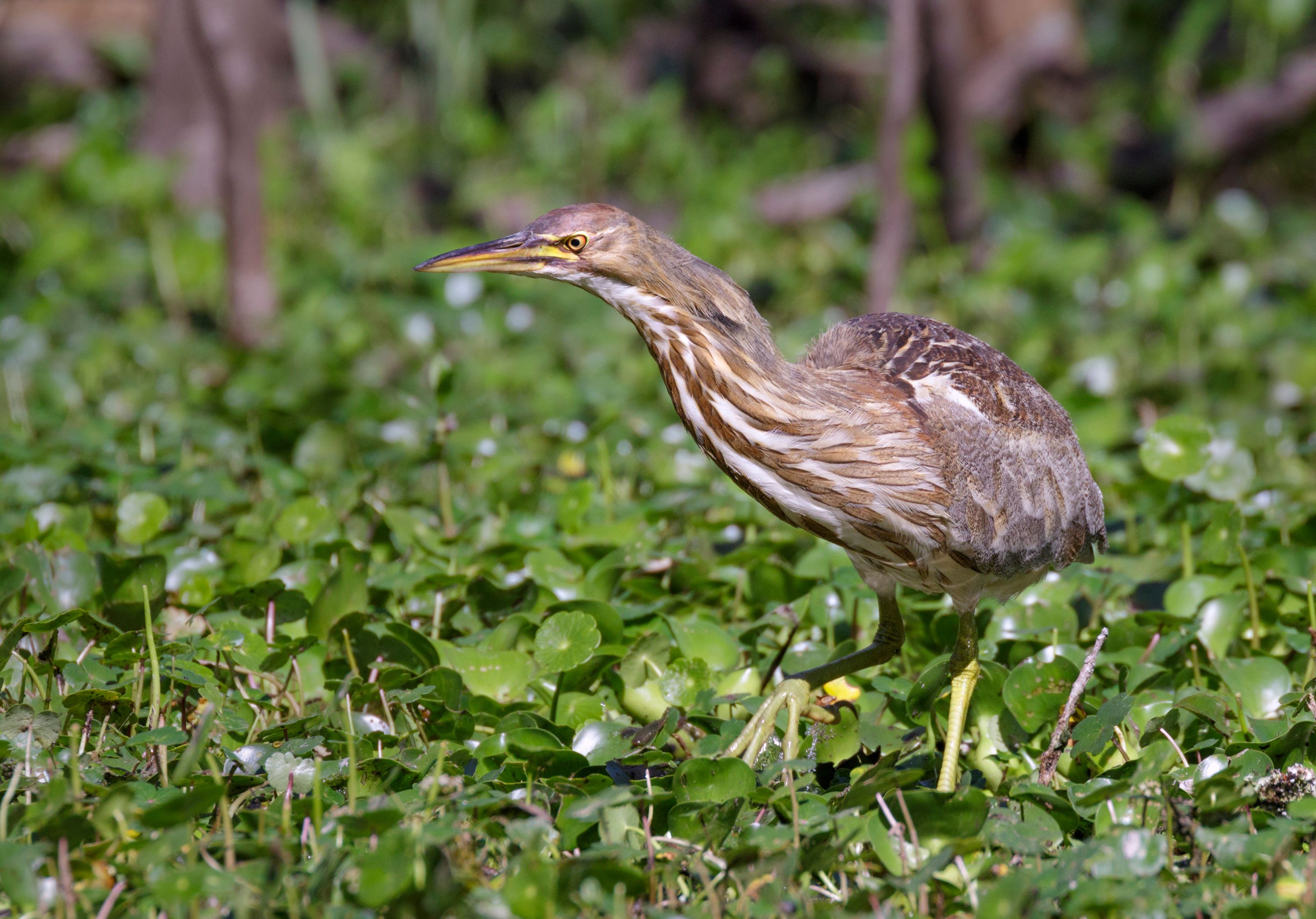
Conclusion
The Ardeidae family, with its diverse species, is integral to the ecological balance of wetlands worldwide. Their presence and health are indicators of the environmental quality of these habitats. Conservation efforts to protect and restore wetland ecosystems are crucial for the survival and prosperity of this fascinating bird family.
Subfamilies of Ardeidae: Botaurinae and Ardeinae
The family Ardeidae, known for its diverse array of herons, egrets, and bitterns, is divided into two primary subfamilies, each distinguished by unique characteristics and specialized adaptations:
- Ardeinae: The more diverse and widely distributed subfamily, Ardeinae, encompasses the typical herons and egrets. Members of this subfamily, like the Great Blue Heron (Ardea herodias) and the Snowy Egret (Egretta thula), are often found in more open wetland areas and are known for their long legs and necks, which aid in wading and fishing in both freshwater and marine environments. These birds are generally more visible and are known for their elegant stature and hunting techniques.
- Botaurinae: This subfamily primarily includes bitterns, which are characterized by their elusive nature and cryptic plumage that allows them to blend seamlessly into reed beds and marsh vegetation. Bitterns, such as the American Bittern (Botaurus lentiginosus) and the Eurasian Bittern (Botaurus stellaris), are known for their booming calls and solitary habits, often remaining hidden within their wetland habitats.
